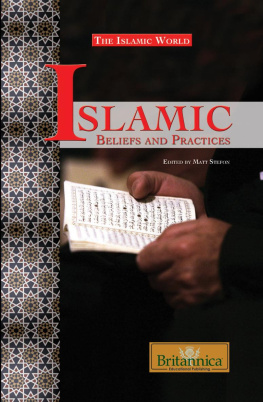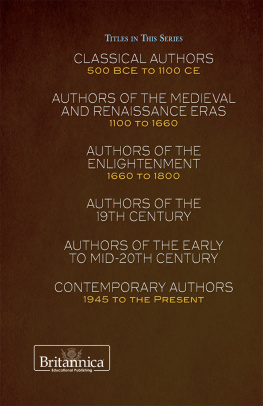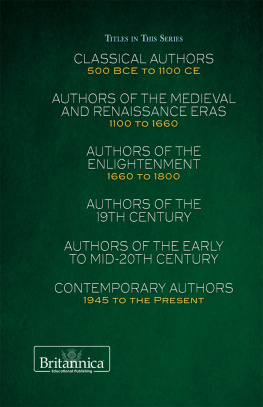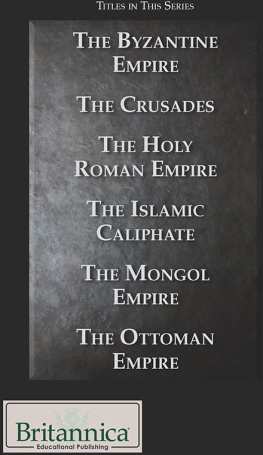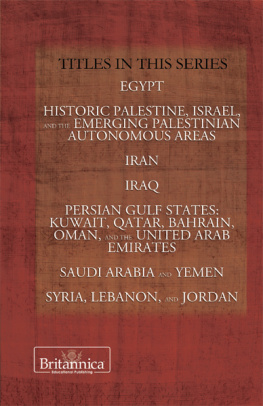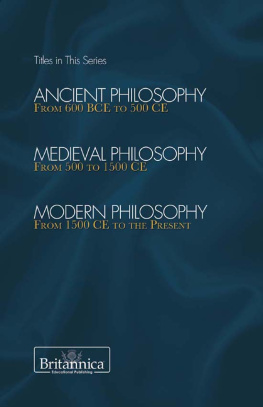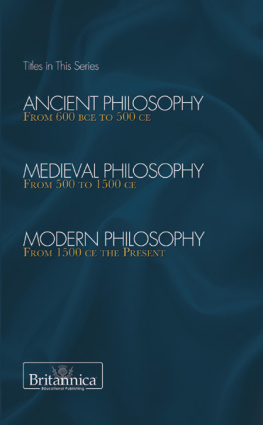Published in 2010 by Britannica Educational Publishing
(a trademark of Encyclopdia Britannica, Inc.)
in association with Rosen Educational Services, LLC
29 East 21st Street, New York, NY 10010.
Copyright 2010 Encyclopdia Britannica, Inc. Britannica, Encyclopdia Britannica, and the Thistle logo are registered trademarks of Encyclopdia Britannica, Inc. All rights reserved.
Rosen Educational Services materials copyright 2010 Rosen Educational Services, LLC.
All rights reserved.
Distributed exclusively by Rosen Educational Services.
For a listing of additional Britannica Educational Publishing titles, call toll free (800) 237-9932.
First Edition
Britannica Educational Publishing
Michael I. Levy: Executive Editor
Marilyn L. Barton: Senior Coordinator, Production Control
Steven Bosco: Director, Editorial Technologies
Lisa S. Braucher: Senior Producer and Data Editor
Yvette Charboneau: Senior Copy Editor
Kathy Nakamura: Manager, Media Acquisition
Matt Stefon: Assistant Editor, Religion
Rosen Educational Services
Joanne Randolph: Editor
Hope Lourie Killcoyne: Senior Editor and Project Manager
Nelson S: Art Director
Matthew Cauli: Designer
Introduction by Janey Levy
Library of Congress Cataloging-in-Publication Data
Islamic beliefs and practices / edited by Matt Stefon.1st ed.
p. cm.(The Islamic world)
In association with Britannica Educational Publishing, Rosen Educational Services.
ISBN 978-1-61530-060-0 (eBook)
1. IslamCustoms and practices. 2. IslamDoctrines. I. Stefon, Matt.
BP174.I87 2010
297dc22
2009038290
On the cover: The Quran, the sacred scripture of Islam, is for Muslims the word of Allah (God) as revealed to the Prophet Muhammad. The word Quran (also spelled Koran) is Arabic for recitation. Boryana Katsarova/AFP/Getty Images
INTRODUCTION
I slam is and has for centuries been one of the worlds most important and influential religions. Today, it is the second largest religion on Earth, with more than one billion followers around the globe. Yet most Westerners know and understand little about it. If the September 11, 2001, terrorist attacks on New York City and Washington, D.C., thrust Islam into Western consciousness, they certainly did nothing to improve the Western worlds understanding of it. Listening to most news stories reported in the United States since the attacks, one could easily form the misperception that most Muslims are violent extremists bent on destroying Western civilization and imposing strict Islamic fundamentalism on the world. Yet this is a distortion that paints a grossly inaccurate picture of Islam and dishonors the vast majority of Muslims. So then what exactly is Islam? What is its history? What are its teachings?
Islamlike Judaism and Christianityrevolves around belief in the one and only God, whom Muslims call Allah. At the heart of Islam is the notion of tawhid, or the oneness of God. The Quran, Islams holy book, constantly stresses Allahs reality, unknowable mystery, and actions on behalf of his creation. Also stressed are Allahs many names, including Lord of the Worlds, the Most High, the One and Only, the Living One, the Sublime, the Wise, the Omnipotent, the Merciful, and the Constant Forgiver. For Muslims, nothing happens in the world unless Allah wills it. Thus, one often hears the phrase inshaa Allah, which means if Allah wills, in Muslims daily conversations. The believers relationship to Allah is expressed in the very name of the religion. Islam is an Arabic word meaning surrender.
Muhammadknown to Muslims as the Prophet Muhammad or simply the Prophetfounded Islam. He was born around 570 in the city of Mecca, in what is today Saudi Arabia. An important commercial center, Mecca was also a preeminent pilgrimage site because of the Kabah, a shrine central to the religious cults of various Arab tribes and decorated with cult idols.
Muhammads parents belonged to the Quraysh, Meccas ruling tribe and guardians of the Kabah. It would seem he was destined to have a secure position in Arab society. However, tragedy struck before he was even born. His father died, leaving his mother to raise him. Following established custom, she sent the infant to live with a desert family so that he might learn the purest Arabic, Arab traditions, self- discipline, nobility, and freedom. According to Muslim tradition, it was during this period that something astonishing happened. Two angels appeared to the young Muhammad, purifying his heart with snow. Soon after, the boy returned to his home.
Back in Mecca, tragedy struck again. Muhammads mother died when he was six years old. He then went to live with his grandfather, who died two years later. The young Muhammad moved once again, this time to live with his uncle Abu Talib, the father of Ali. In spite of all the tragedy he had experienced, Muhammad grew to be a remarkable young man. By the time he was 24, he was running his uncles business and was renowned for his honesty, fairness, and generosity. The people of Mecca called him al-Amin, the Trusted One, and often sought his help in settling disputes. He was a highly respected figure in Mecca by the time he was 35.
Muhammads reputation owed much to his deep religious devotion. He often went into the desert to pray and meditate. On one of these desert trips, around 610, Muhammad received a visit from the archangel Gabriel. This event marked the beginning of the revelation of the Quran, which Gabriel delivered to Muhammad from Allah. The revelations continued until shortly before Muhammads death in 632.
Muhammad shared the revelations first with his family, then with a few friends. Three years after Gabriels first appearance to him, Muhammad started preaching publicly. He soon attracted followers, including some of Meccas most distinguished residents. However, most prominent Meccans, as well as some members of his family, rejected Muhammads teachings, partly for practical reasons. For the Prophet and his followers, Meccas great shrine, the Kabah, had been built by Adam to honor the one God and rebuilt later by the Jewish prophet Abraham. People of Mecca feared that such teachings, combined with Islams renunciation of idolatry, would drive away the pilgrims who came to the Kabahand the influx of money they brought with them. As Muhammads influence grew, opposition to him increased.








